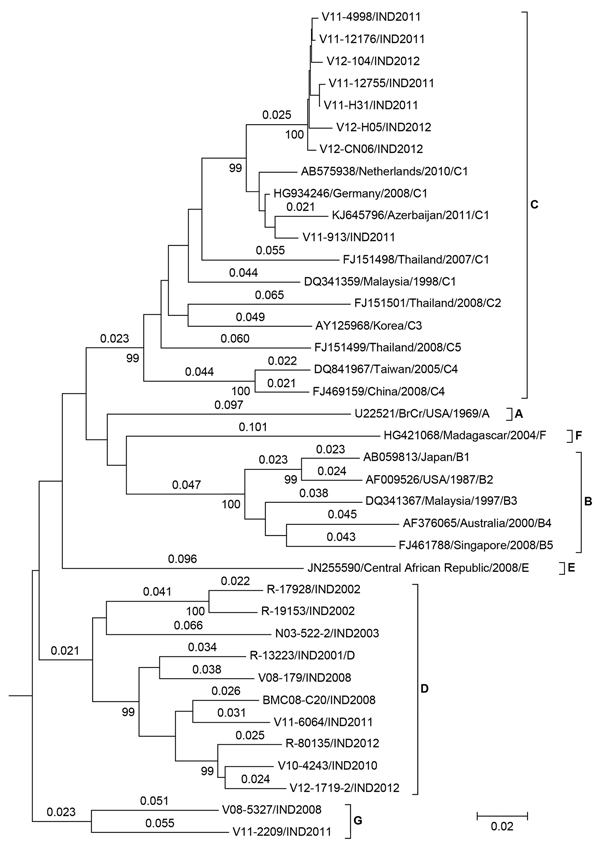Volume 21, Number 1—January 2015
Dispatch
Genetic Diversity of Enterovirus A71, India
Figure 1

Figure 1. Neighbor-joining tree of enterovirus (EV) A71 using complete viral protein 1 (VP1) sequences. Genetic distances calculated by Kimura 2-parameter method are shown above the branches, and bootstrap values (1,000 replicates) are shown below. VP1 sequence of CA16 was used as the outgroup (not shown). Isolates V08–5327 and V11–2209 represent a new genogroup: G. Scale bar indicates nucleotide substitutions per site.
Page created: December 19, 2014
Page updated: December 19, 2014
Page reviewed: December 19, 2014
The conclusions, findings, and opinions expressed by authors contributing to this journal do not necessarily reflect the official position of the U.S. Department of Health and Human Services, the Public Health Service, the Centers for Disease Control and Prevention, or the authors' affiliated institutions. Use of trade names is for identification only and does not imply endorsement by any of the groups named above.